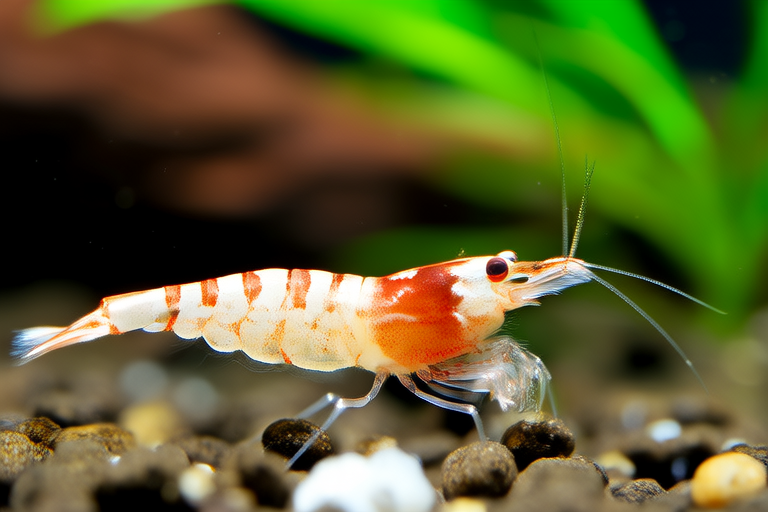How to Care for Your Coral Shrimp Like a Pro: A Complete Guide
Welcome to the world of vibrant and fascinating coral shrimp! These small, colorful crustaceans are a favorite among aquarium enthusiasts due to their unique appearance and peaceful nature. In this comprehensive guide, we will delve into everything you need to know about caring for your coral shrimp, from understanding their natural habitat to setting up the perfect tank environment and beyond.
Introduction to Coral Shrimp
Coral shrimp, also known as cleaner shrimp or Lysmata amboinensis, are native to the Indo-Pacific region. They are commonly found in coral reefs, rocky crevices, and areas with abundant algae growth. These shrimp play a crucial role in the ecosystem by cleaning parasites off larger fish, hence their name. Their bright colors, typically red, white, and blue, make them a popular choice for saltwater aquariums.
Natural Habitat
In their natural habitat, coral shrimp thrive in warm, tropical waters with temperatures ranging from 75°F to 82°F (24°C to 28°C). They prefer areas rich in coral, rocks, and live rock, which provide hiding spots and ample food sources. The water quality in these environments is pristine, with low levels of nitrates and ammonia, and a stable pH level between 8.1 and 8.4.
Ideal Tank Setup
Water Parameters
When setting up a tank for your coral shrimp, it’s essential to replicate their natural environment as closely as possible. Start by maintaining a stable temperature between 75°F and 82°F (24°C and 28°C) using a reliable heater. The pH should be kept between 8.1 and 8.4, and the specific gravity should be around 1.023 to 1.025.
Adequate filtration is vital to ensure water quality. A high-quality protein skimmer helps remove organic waste, while mechanical and biological filtration systems keep the water clean and clear. Regular water changes of 10-20% every week are recommended to maintain optimal conditions.
Tank Size and Decorations
A minimum tank size of 20 gallons is advisable for a small group of coral shrimp. Larger tanks offer more swimming space and reduce stress. Incorporate plenty of live rock, caves, and crevices to mimic their natural habitat. This provides hiding spots and encourages natural behaviors like cleaning other fish.
Diet and Feeding Habits
Coral shrimp are omnivores, meaning they eat both plant-based and animal-based foods. In the wild, they consume algae, detritus, and small invertebrates. In captivity, you can feed them a variety of options, including commercial shrimp pellets, frozen foods like brine shrimp, and algae wafers. Feed them twice daily, offering small portions to prevent overfeeding and water pollution.
Tank Mates Compatibility
Coral shrimp are generally peaceful and can coexist with most saltwater fish and invertebrates. However, avoid keeping them with aggressive species that might prey on them or compete for food. Suitable tank mates include peaceful clownfish, tangs, and other small, non-aggressive fish. Always research potential tank mates thoroughly to ensure compatibility.
Common Health Issues
Like any aquatic life, coral shrimp are susceptible to certain health issues. Common problems include bacterial infections, parasitic infestations, and stress-related disorders. Maintaining excellent water quality through regular water changes and proper filtration can help prevent many of these issues. If you notice any signs of illness, such as lethargy, loss of color, or abnormal behavior, consult with a veterinarian specializing in marine life for diagnosis and treatment.
Maintaining a Healthy Environment
To ensure your coral shrimp remain healthy and happy, pay close attention to water quality. Test the water regularly for ammonia, nitrite, and nitrate levels, and address any imbalances promptly. Additionally, provide a balanced diet and avoid overcrowding the tank. Regular maintenance, including cleaning the filter and vacuuming the substrate, is crucial for a thriving environment.
Breeding Coral Shrimp
Breeding coral shrimp can be a rewarding experience for dedicated aquarists. To encourage breeding, provide a well-established tank with plenty of hiding spots and a stable environment. Coral shrimp are sexually dimorphic, meaning males and females can be distinguished by their size and coloration. Females carry eggs under their abdomen, and once hatched, larvae require brackish water conditions for several weeks before returning to full salinity.
Troubleshooting Common Problems
If your coral shrimp appear stressed or unhealthy, there are several steps you can take to troubleshoot the issue:
- Check Water Parameters: Ensure all water parameters are within the recommended range. Adjust temperature, pH, and salinity as necessary.
- Inspect for Parasites: Look for any visible parasites or signs of infection. Quarantine affected shrimp and treat accordingly.
- Review Diet: Ensure you’re providing a varied and nutritious diet. Avoid overfeeding, as excess food can degrade water quality.
- Reduce Stress: Minimize handling and sudden changes in the tank environment. Provide ample hiding spots to reduce stress.
Conclusion
Caring for coral shrimp requires dedication and attention to detail, but the rewards are well worth it. By understanding their natural habitat, setting up an ideal tank environment, and addressing common challenges proactively, you can enjoy the beauty and tranquility of these fascinating creatures in your home aquarium. Remember, patience and persistence are key to becoming a successful coral shrimp keeper. Happy reefing!
